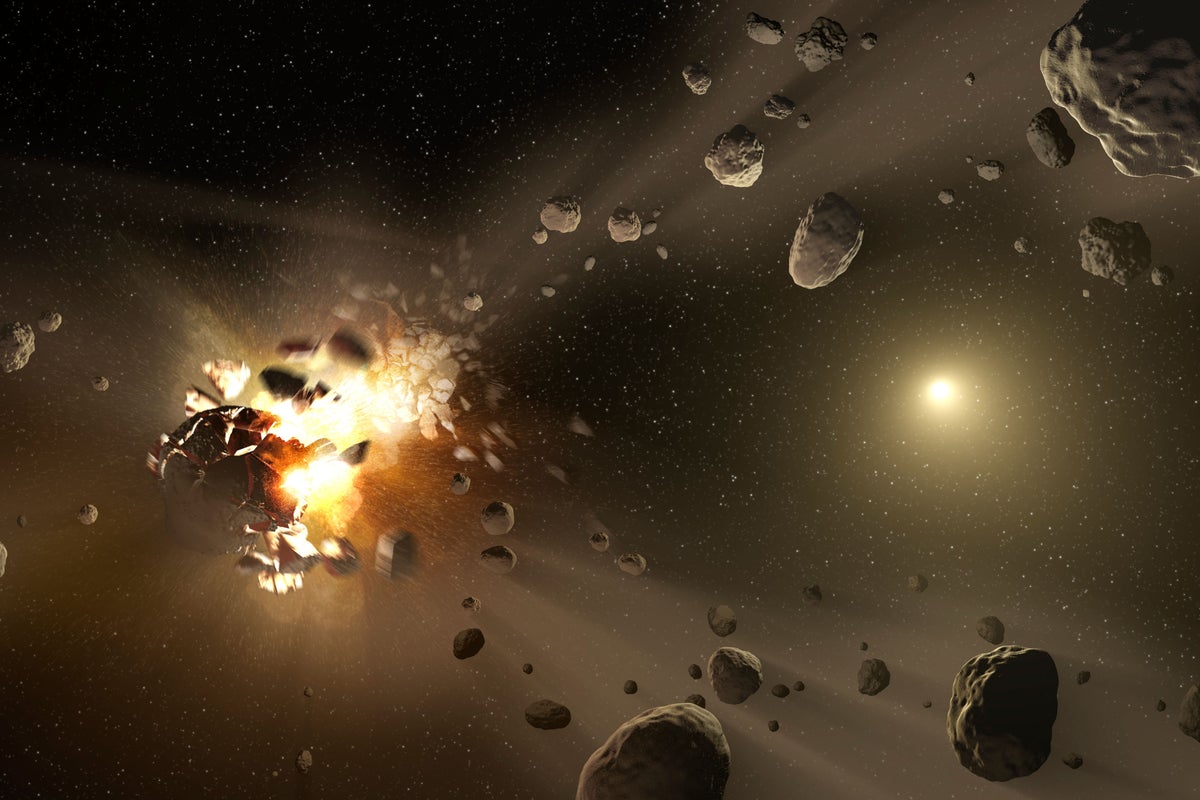
"It's exciting, but it's wrong: asteroids so closely spaced together would grind one another to dust in short order, making it extremely unlikely that you'd ever find such a situation near a star. In our own solar system, there are pretty good odds that you could stand on the surface of an asteroid and not even be able to see another one!"
"Yet they do interact if they are given enough time. Even in the sprawling main asteroid belt between the orbits of Mars and Jupiter, collisions are inevitable. In fact, we've managed to see some small asteroid smashups; bigger rocks are far more rare, so larger collisions are proportionally less common. But they still happen, toospacecraft reconnaissance of large asteroids shows that they are riddled with ancient impact craters."
Asteroid populations in the main belt are sparse, with large bodies separated by millions of kilometers. Collisions occur at very high orbital velocities and are inevitable over long timescales, producing shrapnel and ejecta. Larger collisions are rarer than small smashups, but spacecraft imaging reveals craters on big asteroids from ancient impacts. Ejected fragments often remain on similar orbital paths to their parent bodies, then gradually separate due to slight velocity differences. These orbital similarities allow related fragments to be grouped into asteroid families, though gradual divergence complicates tracing precise lineages.
Read at www.scientificamerican.com
Unable to calculate read time
Collection
[
|
...
]